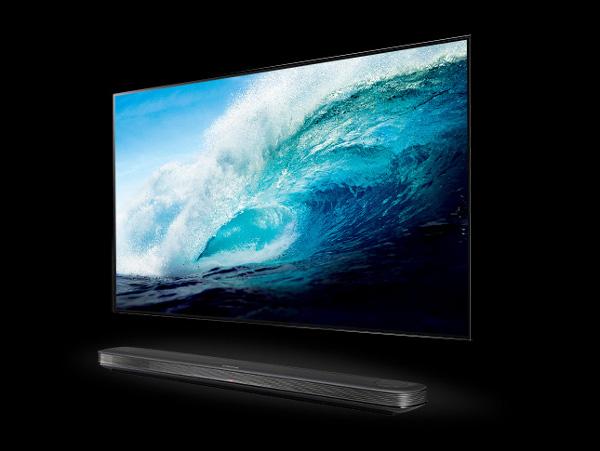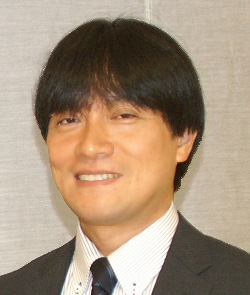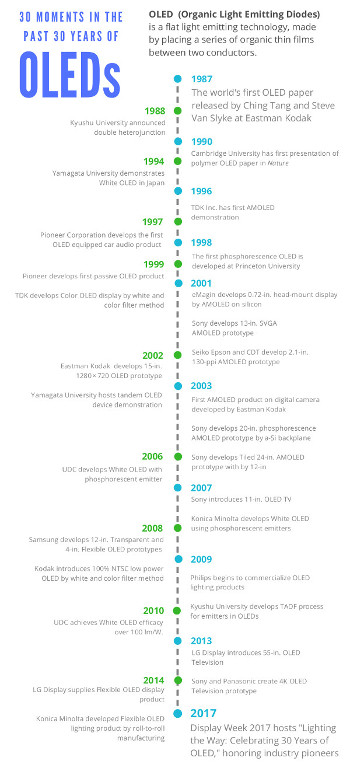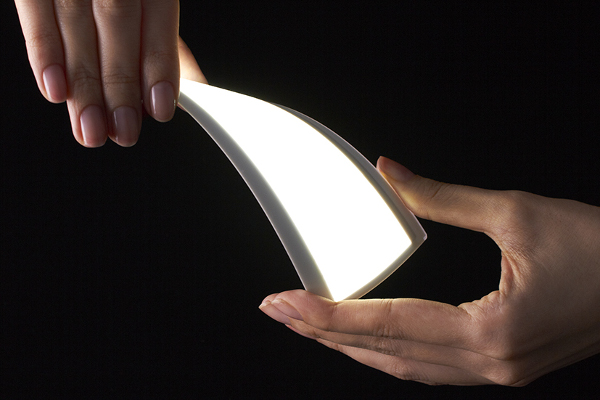OLED Turns 30

 I remember walking into Sony’s booth at CES 2008 and seeing the world’s first organic light-emitting diode (OLED) TV, the XEL-1, featured in a special display with multiple screens. I was immediately struck by the vivid color and deep blacks but the screen, while impressively thin, was only 11 inches. Four years later, Samsung and LG put big-screen OLED TV on the map with the introduction of 55-inch models but they were super expensive at $9,000 and $15,000, respectively. Today, LG is the standard bearer of OLED TVs with a growing lineup of 4K models at prices ranging from around $2,000 to $20,000. And after an extended hiatus, Sony is now back in the fold with three OLED models.
I remember walking into Sony’s booth at CES 2008 and seeing the world’s first organic light-emitting diode (OLED) TV, the XEL-1, featured in a special display with multiple screens. I was immediately struck by the vivid color and deep blacks but the screen, while impressively thin, was only 11 inches. Four years later, Samsung and LG put big-screen OLED TV on the map with the introduction of 55-inch models but they were super expensive at $9,000 and $15,000, respectively. Today, LG is the standard bearer of OLED TVs with a growing lineup of 4K models at prices ranging from around $2,000 to $20,000. And after an extended hiatus, Sony is now back in the fold with three OLED models.
To commemorate the 30th anniversary of the OLED display, we reached out to Dr. Taka Tsujimura at the Society for Information Display (SID) to discuss the past, present, and future of a TV technology whose future looks nearly as bright as it did three decades ago when researchers cobbled together the first practical OLED device. Tsujimura, who was named one of Japan’s 10 best engineer/researchers by Nikkei Electronics magazine, holds 144 patents worldwide and is a Konica Minolta Fellow and general manager of Konica Minolta’s OLED Business Unit in addition to being a member of SID’s executive committee and serving as treasurer.
S&V: It’s hard to believe that OLED has been around for 30 years. Let’s go back to the early days. How did OLED come into being?
Taka Tsujimura: Before the 1980s, there were several reports circulating around that claimed light emission from organic material, such as Anthracene. However, high voltage was required to produce very dim emission and the material had an extremely short lifetime—neither of which were useful for electronic devices. In 1987, Ching Tang and Steve van Slyke built the first practical OLED device while working at Eastman Kodak. The device used a very thin multilayer structure (still used in state-of-art OLEDs), which significantly decreased the driving voltage and made high luminance possible. They documented their pioneering work in the world’s first OLED paper, “Organic Electroluminescent Diodes.”
This paper is responsible for changing the way we think about display and lighting. Since that historic day, OLED has been brought into the spotlight for its ability to enable a high quality image with extremely high contrast. And today we are on the cusp of seeing foldable and flexible mobile displays for both traditional applications and new ones such as AR [augmented reality] and VR [virtual reality]. New forms of lighting are also being enabled by OLED thanks to improved manufacturing methods being developed by many SID member companies and experts.
S&V: Let’s talk a bit about the history of OLED, how it progressed in the marketplace and key milestones along the way.  TT: SID created an infographic with a timeline highlighting 30 key moments in the evolution of OLED. As you can see, many leading organizations have contributed to the advancement of OLED technology. In 1996, TDK was the first company to demonstrate an active-matrix OLED (AMOLED), which became a highly viable incarnation of the technology. In 1997, 10 years after that first OLED paper, Pioneer successfully commercialized the world’s first OLED indicator for a car audio application. And, in 2003, Kodak and Sanyo commercialized the world’s first active-matrix LTPS (low-temperature polysilicon)-driven OLED display for digital cameras. Samsung and LG have been mass producing OLEDs for mobile phones and, more recently, companies such as China’s Visionox are making passive-matrix OLEDs for wearable devices. Today, dozens of companies are making billion-dollar investments in OLED technology.
TT: SID created an infographic with a timeline highlighting 30 key moments in the evolution of OLED. As you can see, many leading organizations have contributed to the advancement of OLED technology. In 1996, TDK was the first company to demonstrate an active-matrix OLED (AMOLED), which became a highly viable incarnation of the technology. In 1997, 10 years after that first OLED paper, Pioneer successfully commercialized the world’s first OLED indicator for a car audio application. And, in 2003, Kodak and Sanyo commercialized the world’s first active-matrix LTPS (low-temperature polysilicon)-driven OLED display for digital cameras. Samsung and LG have been mass producing OLEDs for mobile phones and, more recently, companies such as China’s Visionox are making passive-matrix OLEDs for wearable devices. Today, dozens of companies are making billion-dollar investments in OLED technology.
S&V: OLED was not commercially viable for big-screen TVs until a few years ago. What breakthrough(s) enabled OLED to move beyond small device screens?
TT: Displays are two-dimensional electronic devices so the number of defects increases proportionally with size, which makes manufacturing large panels extremely difficult. The process of “color patterning” organic layers on a substrate using a fine shadow mask was the biggest contributor to losses in the “yield” of usable displays. Color patterning without the mask was considered a promising alternative but it came at the expense of a significant tradeoff between color reproduction and power consumption. In 2008, I authored a paper that proved 100 percent NTSC color reproduction with low power consumption was possible by taking color science into consideration. The method is now an industry standard for the OLED television market.
S&V: What are the key benefits of OLED over other display types in SID’s view?
TT: OLED has several merits over other display technologies, including a wide viewing angle and an extremely thin form factor. And, because OLED is a self-emissive device, it has an “off” state where it stops emitting light, which enables an extremely high contrast ratio with deep, rich blacks. Over the past three decades, we’ve learned about OLED’s promise for various applications, including how it provides more vivid colors and better picture quality in television displays. But OLEDs are also emerging as replacements for conventional lighting because they are efficient and provide diffused lighting with color that can change dynamically to suit the needs of the environment.
S&V: LG currently supplies all of the TV-sized panels used by others (Panasonic and Sony). Do you see other makers of OLED panels coming on board in the near future?
TT: LG’s current four-pixel RGBW OLED display technology provides more flexibility than the RGB method, which makes it possible for “Tier-0” companies to use their own graphics engines to differentiate their front-of-screen image quality from competitors. Other companies are also looking at this method to increase their competitive edge.
S&V: When will manufacturing reach the tipping point where budget brands will be able to procure OLED panels and sell OLED TVs? Or, coming at it from a different angle, when will OLED TVs in popular screen sizes be as affordable as their LED counterparts?
TT: OLED is emerging as a premium display technology for television applications but price erosion is a serious issue and OLED makers are working to maintain a profit margin for the time being. That said, many companies are planning to invest in OLED television and, given the economics of supply and demand in a premium market, we may see OLED televisions at lower price points in a few years. And because OLED display manufacturing requires fewer components than other display technologies, there is the potential to further decrease costs in the future.
S&V: What are OLED’s most significant remaining technical challenges?
TT: The main challenge facing OLED is obviously cost but OLED displays are extremely susceptible to moisture and oxygen, which is why OLED manufacturers are spending a lot to develop anti-moisture/oxygen strategies, such as thin film encapsulation, barrier film for flexible devices, and evaporation chamber control. Manufacturing costs could become significantly lower if a simpler encapsulation system is discovered.
S&V: When will it be technically and economically viable to scale OLED up to projection-screen sizes (100-inch diagonal and larger)?
TT: As I mentioned earlier, yield decreases as display size increases. But continuous OLED manufacturing will eventually lead to reductions in defect ratios, which will make larger displays happen just as we’ve seen with other display technologies.
S&V: Will the importance of high dynamic range (HDR), and the current inability of OLEDs to match the brightness of LCD displays, compromise the viability of OLED in the long run? Or do you anticipate breakthroughs that will allow OLED to advance in this area?
TT: When it comes to what we call high-luminance pixel operation, there is a tradeoff with pixel lifetime as display luminance increases. Currently, LCD can deliver higher luminance than OLED, so in terms of specification, LCD may bring a higher dynamic range. However, thanks to circular polarizing and anti-reflective coating technologies, OLED has very low surface reflection, which helps it reproduce lower-level grayscale [deeper blacks], giving it an edge over other traditional display technologies.
It’s widely known that due to psychological factors such as the HK (Helmholtz-Kohlrausch) effect, high-contrast displays are perceived as being brighter and more vivid. So in that sense, OLED can deliver high fidelity, high dynamic range capabilities over other traditional display technologies.

S&V: What’s next for OLED? In a video promoting the recent Display Week 2017, Kateeva’s Chris Brown talks about the OLED industry moving into its “flexible phase’’ with mobile displays that unfold to larger screen sizes.
TT: Flexible displays open up tremendous market opportunities, allowing OLED technology to be used anywhere—in a suit pocket, on architectural walls, and inside curved automotive instrument panels, to name a few. Flexible OLED has an opportunity to be a key player in the mobile phone market. Phone manufacturers are drawn to OLED for its improved display performance and flexible form factor, which enables innovative capabilities such as screens that can be unfolded or unrolled into larger sizes. Improved image quality along with larger display sizes, lighter weight, increased ruggedness, and innovative designs and form factors are all ideas for a market continually on the hunt for new innovations. It will be exciting to see what the future holds for flexible OLED displays.






























































